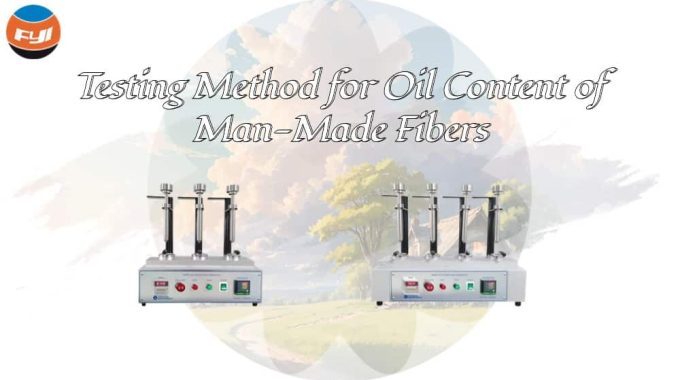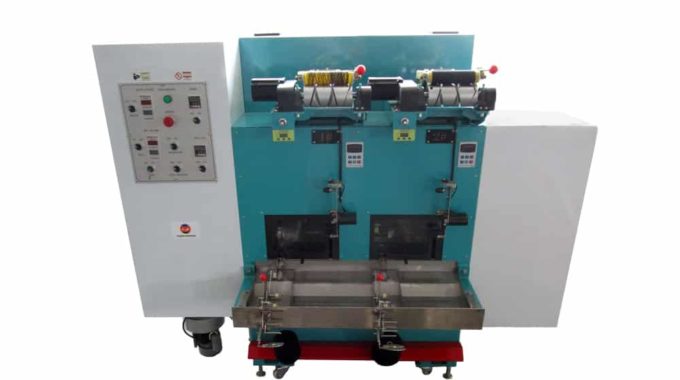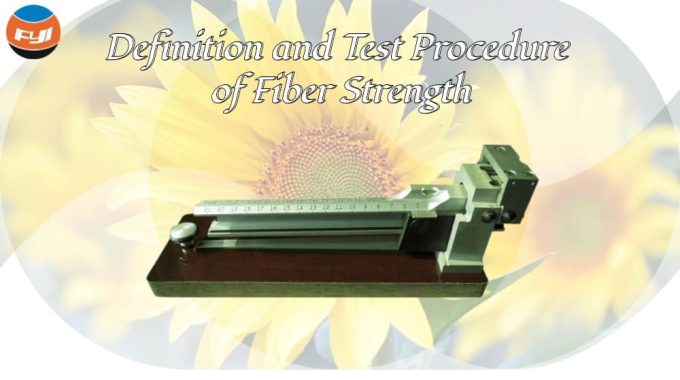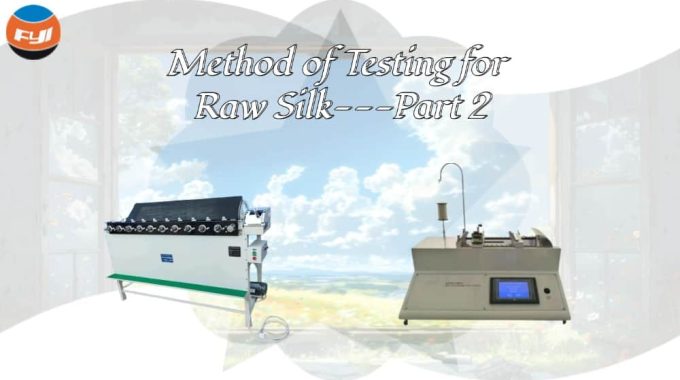
Method of Testing for Raw Silk—Part 2
In addition to the winding test, size test and breakage length and elongation at break test mentioned in the part 1, the general inspection process of raw silk also includes evenness test, cohesion test, cleanness and neatness test, which will be introduced in part 2 continuously.
Evenness Test
Evenness is an indicator of the uniformity of the thickness of short segments of raw silk.
Under standard illumination condition, the degree of change in the diameter of the silk, as well as its’ transparency and roundness, can be determined by observing the changes in the brightness of the silk sample. The better the evenness of raw silk, the smoother and more uniform the shape of the silk fabric, and the better the color absorption balance.
Apparatus and Equipment Required
1) Seriplane: winding speed is 100r/min, quantity of slices on inspection panel can be adjusted;
2) Inspection panel: 1359*463 mm (L*W);
2) Evenness Standard Photographs;
3) Illumination room: Dark rooms equipped with lighting devices should be isolated from external light, and their walls and blackboards should be coated with black matte paint with uniform and consistent color.
Sample Preparation
Prepare 50 pieces of silk cone from winding test, take two slices from each cone; if the initial sample silk is on cones, take 20 cones directly without further preparation, and take 5 slices from each cone; wind 100 slices distributed on 10 blackboards evenly. The length of every slice is 127mm.
The arrangement quantity of raw silk of different sizes on the blackboard is shown in the table below:
Table 1. The rules for quantity of slices on inspection panel
| Size (D, dtex) | Quantity of silk yarns per 25.4 mm slice |
| 9 (10.0) and finer | 133 |
| 10~12(11.1~13.3) | 114 |
| 13~16(14.4~17.8) | 100 |
| 17~26(18.9~28.9) | 80 |
| 27~36(30.0~40.0) | 66 |
| 37~48(41.1~53.3) | 57 |
| 49~69(54.4~76.7) | 50 |
Inspection Procedure
Place the inspection panels on the rack, making it perpendicular to the ground. The inspector stands 2.1 meters away from the panels, compare each silk slice with a standard photograph one by one and record its’ Evenness Variation degree.
Cleanness & Neatness Test of raw silk
Apparatus and Equipment Required
1) Cleanness standard Photographs;
2) Neatness standard Photographs;
3) Seriplane: in accordance with evenness test;
4) Illumination room: in accordance with evenness test.
Cleanness Test
This test is conducted to ascertain Super Major Defects, Major Defects and Minor Defects. Each defect carries penalty points and the difference of the total penalty points from 100 gives the test result.
Inspection Procedure
The inspector stands 0.5 meters away from the panels that has undergone evenness test. Every defect on both sides of the panel should be inspected and recorded one by one according to the standard photograph. The record should indicate the number of defects in 100 panels found by testing and also show the cleanness points, which is determined by deducting from 100 points. The total penalty is calculated by penalizing each defect with the following rate:
For each super major defect: 1.0 point;
For each major defect: 0.4 point;
For each minor defect: 0.1 point;
The cleanness’s grade regulation is as the table below:
Table 2. the rules of cleanness defects grade
| Name of defects | Remark | |
| Super major defects | All major defects in length or size which are ten times larger than the minimum size of Major Defects are named Super Major Defects. | |
| Major defects | Waste | This is a mass of tangled cocoon filaments or fibers attached to the yarn. |
| Large slugs | These are somewhat thickened places in the thread 7 mm and above in length, or very badly thickened places shorter than 7 mm. | |
| Bad casts | These appear as abruptly thickened places in the yearn due to the cocoon filaments not properly adhering to the raw silk yearn, or caused by feeding more than one cocoon filament at a time. | |
| Very long knots | These are knots, which have loose ends, 10 mm and over, or those made by incorrect tying of threads | |
| Heavy corkscrews | Heavy corkscrews are places in which one or more cocoon filaments are longer than the rest, and give the appearance of a very coarse and large spiral. | |
| Minor defects | Small slugs | which are considerably thickened places in the thread from 2 to less than 7 mm in length, or extremely thickened places less than 2 mm in length. |
| Long knots | knots, which have loose ends below 10 and more than 3 mm in length. | |
| Corkscrews | Corkscrews are places in which one or more cocoon filaments are longer than the remainder, and give the appearance of a thick spiral. | |
| Long loops | loose ends are loops or split ends, 10 mm and above in length, when measured along the filament. |
Neatness Test
Imperfection in raw silk, which are smaller than those described as minor cleanness defects are known as neatness defects. The 5 types of neatness defect are as follows:
- Nibs are small thickened places or spots in the yarn less than 2 mm in length.
- Loops are small open places in the yarn caused by the excessive length of one or more cocoon filaments, less than 10 mm in length when measured along the filament.
- Hairiness and fuzziness are the conditions of yarn, which show small loose ends of less than 10 mm and fine particles of cocoon filaments protruding from the yarn.
- Small knots are knots, which have loose ends, less than 3 mm in length.
- Fine corkscrews are places in which one or more cocoon filaments are longer than the remainder and give the appearance of a spiral.
Inspection Procedure
As the same as cleanness test, the inspector stands 0.5 meters away from the panels that has undergone evenness test. Select any side of the inspection panel, compare each silk slice with the clean standard photograph based on the shape, size, quantity, and distribution of clean defects, and score them.
Deduction rules are as table below in the following:
Table 3. Deducting points by Neatness results
| Neatness | Deducting points | Neatness | Deducting points |
| Above 80 | 0 | 50 | 1.5 |
| 75 | 0.25 | 40 | 2.0 |
| 70 | 0.5 | 30 | 2.5 |
| 65 | 0.75 | 20 | 3.0 |
| 60 | 1.0 | 10 | 3.5 |
| 55 | 1.25 |
Cohesion Test of raw silk
By means of the Duplan cohesion tester, the number of frictions required to split silk thread for the purpose of examining the state of cocoon filaments sticking together, can be counted.
Apparatus and Equipment Required
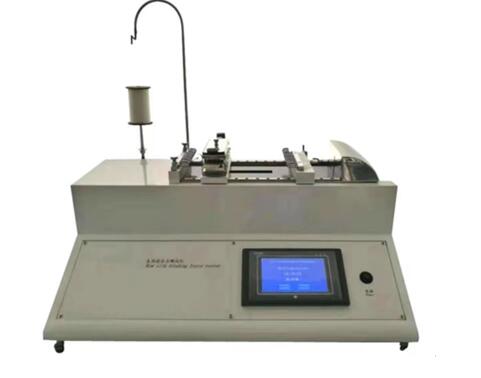
Sample Preparation
The sample for the test should consist of 20 test pieces taken out of winding test. The yarn should be free from any cleanness defect or apparent evenness defect in the portion, which is to be tested.
Inspection Procedure
The test is performed in a room where standard humidity can be maintained during the test. The maximum speed of stroke should be 140 strokes per min. The machine should be stopped after every ten strokes and every single yarn inspected very carefully to see if there are any open places. As soon as ten different open spaces, 6 mm long and above are observed, they are recorded against the number of strokes which should be considered as the strokes of the thread opened. The record of the test is the average number of strokes of 20 test pieces. The result of cohesion is recorded by omitting the decimal.
